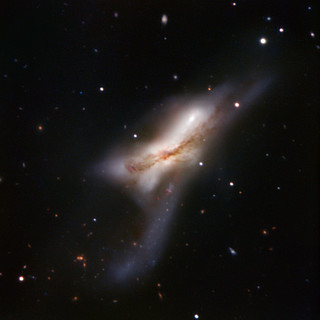Beginners'
guide to ...
Your first five sights
Tooled up
and ready to go, but don't know where to aim your scope? Here's our list of the
top sights.
THE BASICS
What are
the best objects to aim at for your first nights at the telescope? Where you
need to look in the night sky to find them. How you can get the most out of
your first Foray into stargazing
The long
winter nights mean it's a great time of year for stargazing, with the sky
filled with some real celestial gems. If you've just bought a telescope or have
asked for one, you'll no doubt want to get out there and start using it. However,
faced with the countless points of light in the night sky, it can be a daunting
task to decide what to aim your telescope at first.
To make
sure you're suitably impressed, we've highlighted five top sights that arc
around at the moment. We've explained where and when to search for them, and
what to look for. This list will also give you a good taste of the range of
objects you can point your telescope at.
Heading up
our list is the Moon – the best place for any fledgling astronomer to start is
our nearest celestial neighbor, You haven't really seen this familiar celestial
body until you've viewed it with a telescope; its rugged, crater- marked
surface will keep you coming back to your new scope for more.
You'll then
need to bag yourself a planet and Jupiter, the largest of them all, will be a
stunning sight. We then take you to deep space and the famous Orion nebula, a
huge cloud of gas and dust hanging in Orion's Sword. Indeed, a relatively cheap
telescope with an aperture of 3 to 6 inches will show you a wide variety of
astronomical objects, and our final two targets are a distant galaxy and a pair
of star clusters.
You could
just rush outside and get going. But, with a little preparation, your session
can be even more enjoyable. Once you're at the scope, with your eye properly
adjusted to the dark after 20 minutes or so outside, you're ready to go.
What you
won't see are grand, colorful objects that look like the stunning space images
you see in books. However, what you do get is an amazing feeling as you find
the e incredible objects for yourself.
Your first telescope targets
Ready? Take
aim ... Go! Read on to find the top five astronomical objects for beginners
 |
| The moon |
THE MOON
Constellation:
It doesn't stay in the same place but it's hard to miss
When to
view: 8 to 17 December and 8 to 17 January
These dotes
cover the waxing phases of the Moon in the evening skies, from the date when it
is first seen as a thin crescent emerging after sunset. The reason you want to
look at this time is because the terminator is visible. This is the line
between the lighted side and the dark side of the Moon and the place where the
Sun's light catches the craters and mountain ranges, thus casting amazing
shadows across the lunar surface.
JUPITER
 |
| Jupiter | |
Constellation: moving from Aquarius into Pisces in the south
When to view: as soon as it's dark
Jupiter is unmistakable as there are no
bright stars in the area where it sits. Through a small telescope, you can see
the planet as a disc with several dark bands of its atmosphere. You may also
see Jupiter's four largest moons as points of light either side of the planet.
ORION NEBULA, M42
Constellation:
Orion
When to
view: from 9pm at the start of December
 |
| Orion Nebula |
The Orion
Nebula, numbered 42 in the famous Messier Catalogue of deep-sky objects, is a
'must' for observing the winter skies. The Orion Nebula is just visible to the
unaided eye as a misty patch, but even the smallest of scopes will start to
reveal the sweeping structure of this stellar nursery. You will see it as a
wonderful curving cloud of dust and gas.
ANDROMEDA
GALAXY, M31
Constellation:
Andromeda
 |
| Andromeda Galaxy M31 |
When to
view: as soon as it's dark, high in the sky
M31 is
found by star-hopping from the nearby asterism, the Great Square of Pegasus.
This will appear as a misty patch to the eye but is actually a giant, spiral
island of stars, similar to our own Milky Way Galaxy. What is so impressive
about the Andromeda Galaxy is that what you are looking at sits at around 2.75
million light-years away - a staggering distance.
SWORD
HANDLE (DOUBLE CLUSTER) NGC 869 & NGC 884
Constellation:
Perseus
When to
view: as soon as it's dark
 |
| SWORD
HANDLE (DOUBLE CLUSTER) |
The Sword
Handle will be very high in the east and moves almost overhead through the
night. To find the Sword Handle, locate the 'W'-shape of Cassiopeia and work
from there. In a darker location, it's just visible with the unaided eye. With
a small telescope it's a wondrous sight of two amazing, roundish concentrations
of hundreds of stars.




















